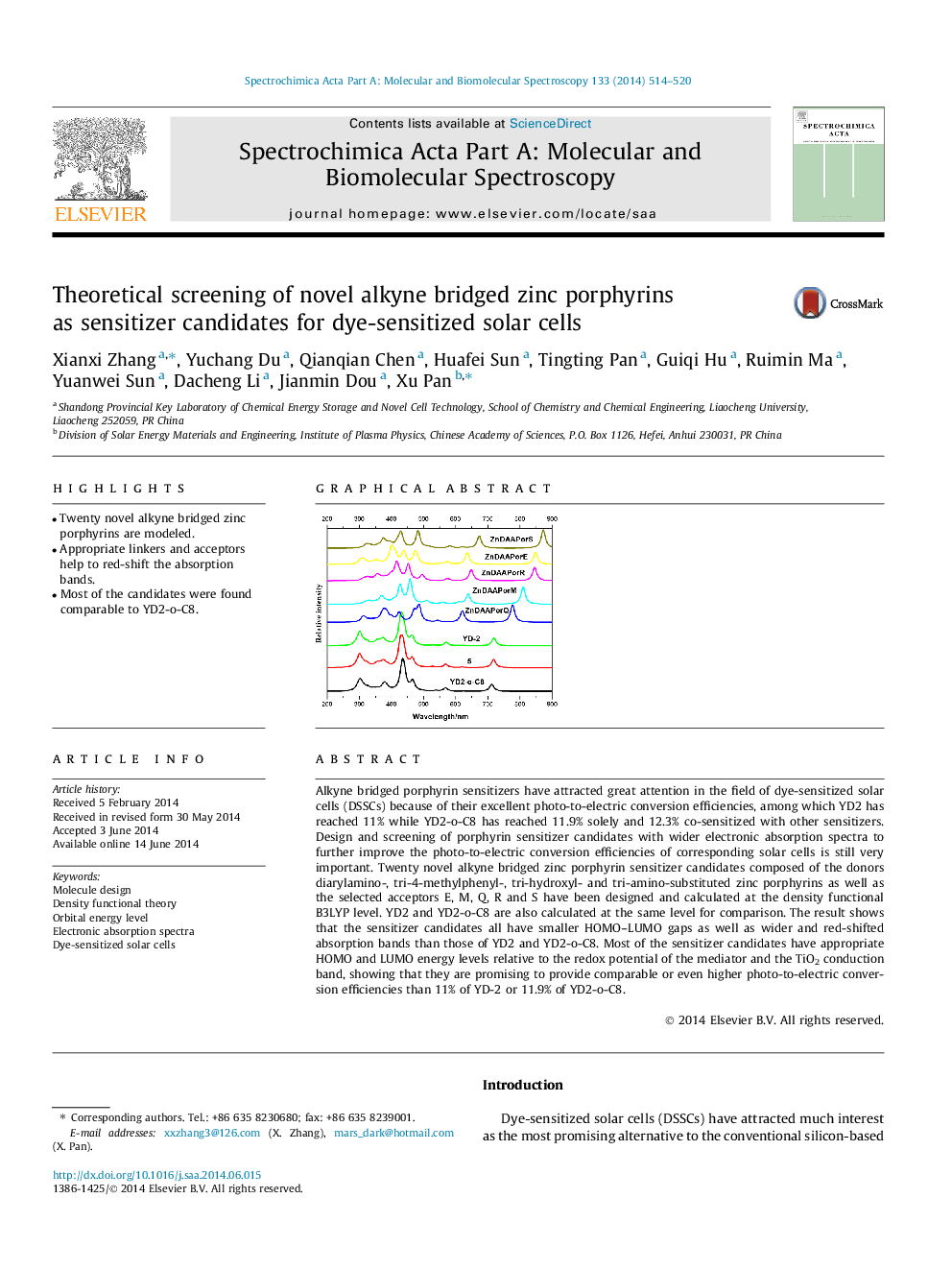| کد مقاله | کد نشریه | سال انتشار | مقاله انگلیسی | نسخه تمام متن |
|---|---|---|---|---|
| 1233480 | 1495235 | 2014 | 7 صفحه PDF | دانلود رایگان |
• Twenty novel alkyne bridged zinc porphyrins are modeled.
• Appropriate linkers and acceptors help to red-shift the absorption bands.
• Most of the candidates were found comparable to YD2-o-C8.
Alkyne bridged porphyrin sensitizers have attracted great attention in the field of dye-sensitized solar cells (DSSCs) because of their excellent photo-to-electric conversion efficiencies, among which YD2 has reached 11% while YD2-o-C8 has reached 11.9% solely and 12.3% co-sensitized with other sensitizers. Design and screening of porphyrin sensitizer candidates with wider electronic absorption spectra to further improve the photo-to-electric conversion efficiencies of corresponding solar cells is still very important. Twenty novel alkyne bridged zinc porphyrin sensitizer candidates composed of the donors diarylamino-, tri-4-methylphenyl-, tri-hydroxyl- and tri-amino-substituted zinc porphyrins as well as the selected acceptors E, M, Q, R and S have been designed and calculated at the density functional B3LYP level. YD2 and YD2-o-C8 are also calculated at the same level for comparison. The result shows that the sensitizer candidates all have smaller HOMO–LUMO gaps as well as wider and red-shifted absorption bands than those of YD2 and YD2-o-C8. Most of the sensitizer candidates have appropriate HOMO and LUMO energy levels relative to the redox potential of the mediator and the TiO2 conduction band, showing that they are promising to provide comparable or even higher photo-to-electric conversion efficiencies than 11% of YD-2 or 11.9% of YD2-o-C8.
Figure optionsDownload as PowerPoint slide
Journal: Spectrochimica Acta Part A: Molecular and Biomolecular Spectroscopy - Volume 133, 10 December 2014, Pages 514–520
